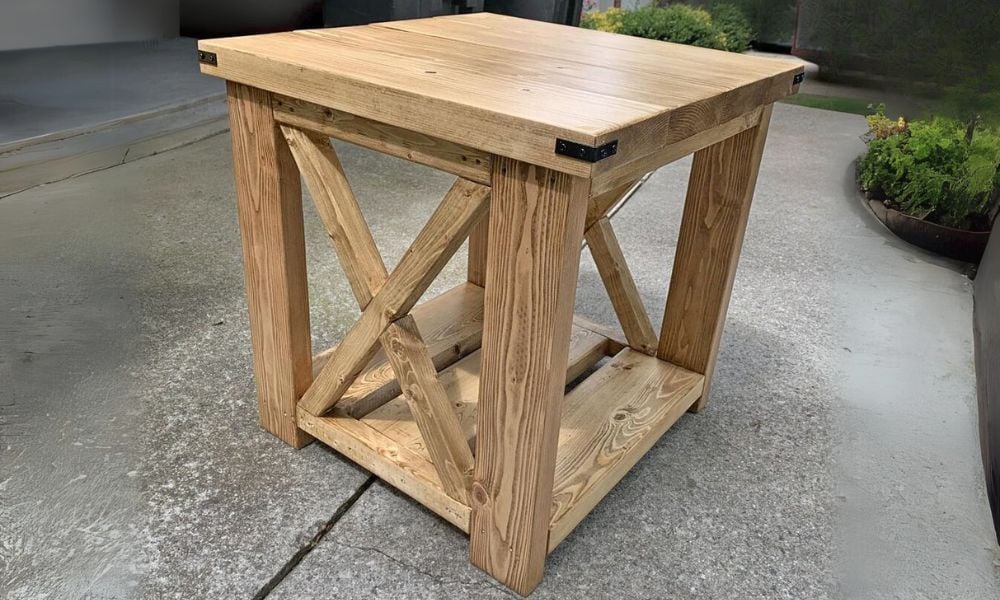
Beginner farmhouse side table plans with X detailing. Matches our Farmhouse Coffee Table and Farmhouse Console Table plans.
This collection is designed to be easier to build and less expensive than our very similar Rustic X Collection.
Dimensions
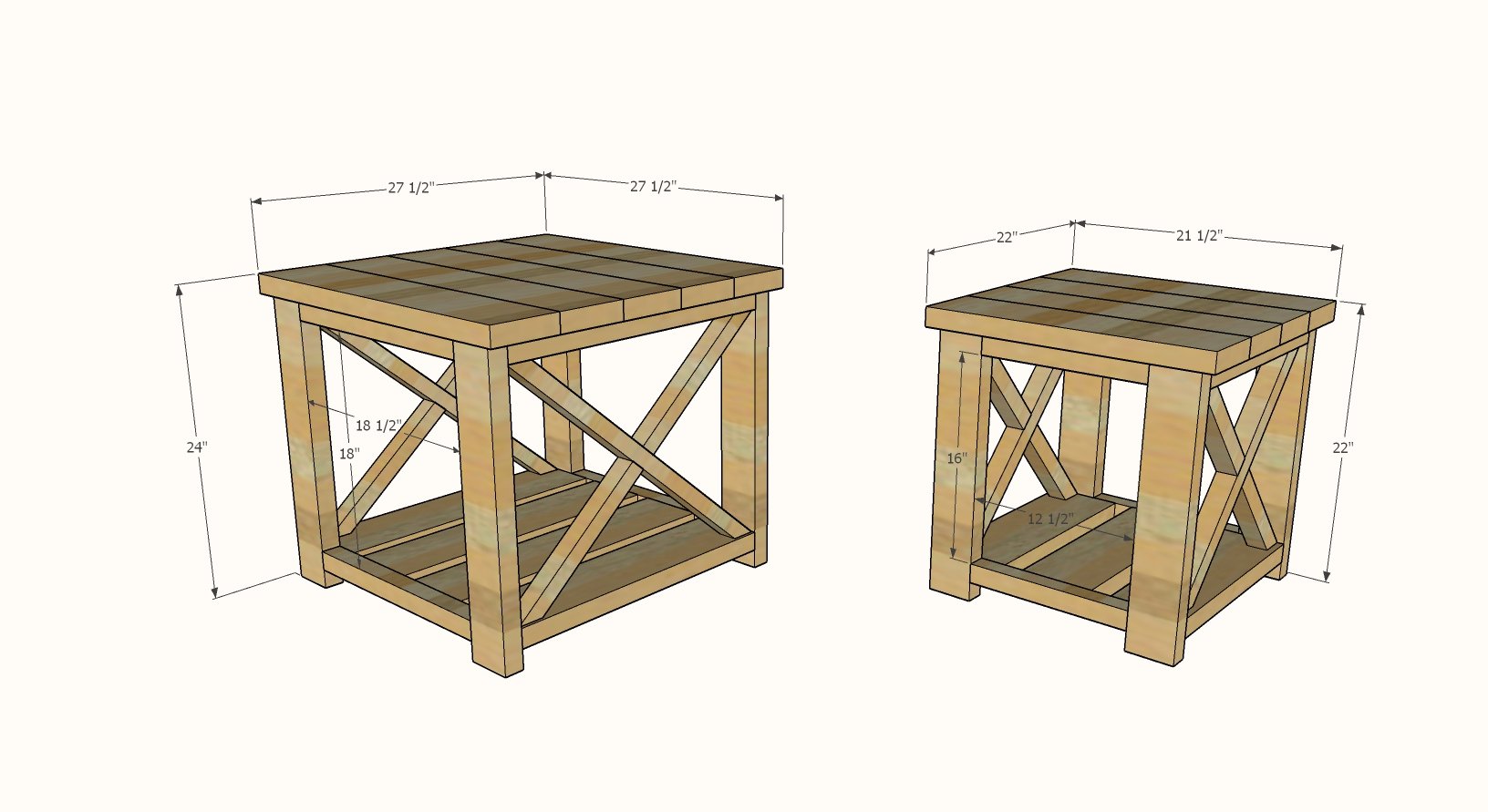
Two different sizes are available in this plan. Dimensions are shown in diagram.
Preparation
Shopping List
Shopping List for Large Farmhouse Coffee Table
- 1 - 2x4 @ 8 feet long
- 3 - 2x6 @ 8 feet long
- 3 - 2x2 @ 8 feet long
- About 70 2-1/2" long self tapping wood screws
Shopping List for Small Farmhouse Coffee Table
- 1 - 2x4 @ 8 feet long
- 2 - 2x6 @ 8 feet long
- 2 - 2x2 @ 8 feet long
- About 60 2-1/2" long self tapping wood screws
Cut List
Cut List for Large Farmhouse Coffee Table
- 4 - 2x4 @ 22-1/2" - legs
- 6 - 2x6 @ 23-1/2" - bottom shelf and top aprons
- 4 - 2x2 @ 32" - X detailing, still needs to be cut at an angle
- 4 - 2x2 @ 18-1/2" - side aprons
- 5 - 2x6 @ 27-1/2" - tabletop boards
Cut List for Small Farmhouse Coffee Table
- 4 - 2x4 @ 20-1/2" - legs
- 5 - 2x6 @ 18" - bottom shelf and top aprons
- 4 - 2x2 @ 22" - X detailing, still needs to be cut at an angle
- 4 - 2x2 @ 12-1/2" - side aprons
- 4 - 2x6 @ 21-1/2" - tabletop
Cutting Instructions
Cut all boards with a compound miter saw (preferred) or use a circular saw and clamps.
Instructions
Step 1
Step 2
Add the X detailing to the legs. Please see this post for more information on how to do this step.
Step 3
Project Type
Room











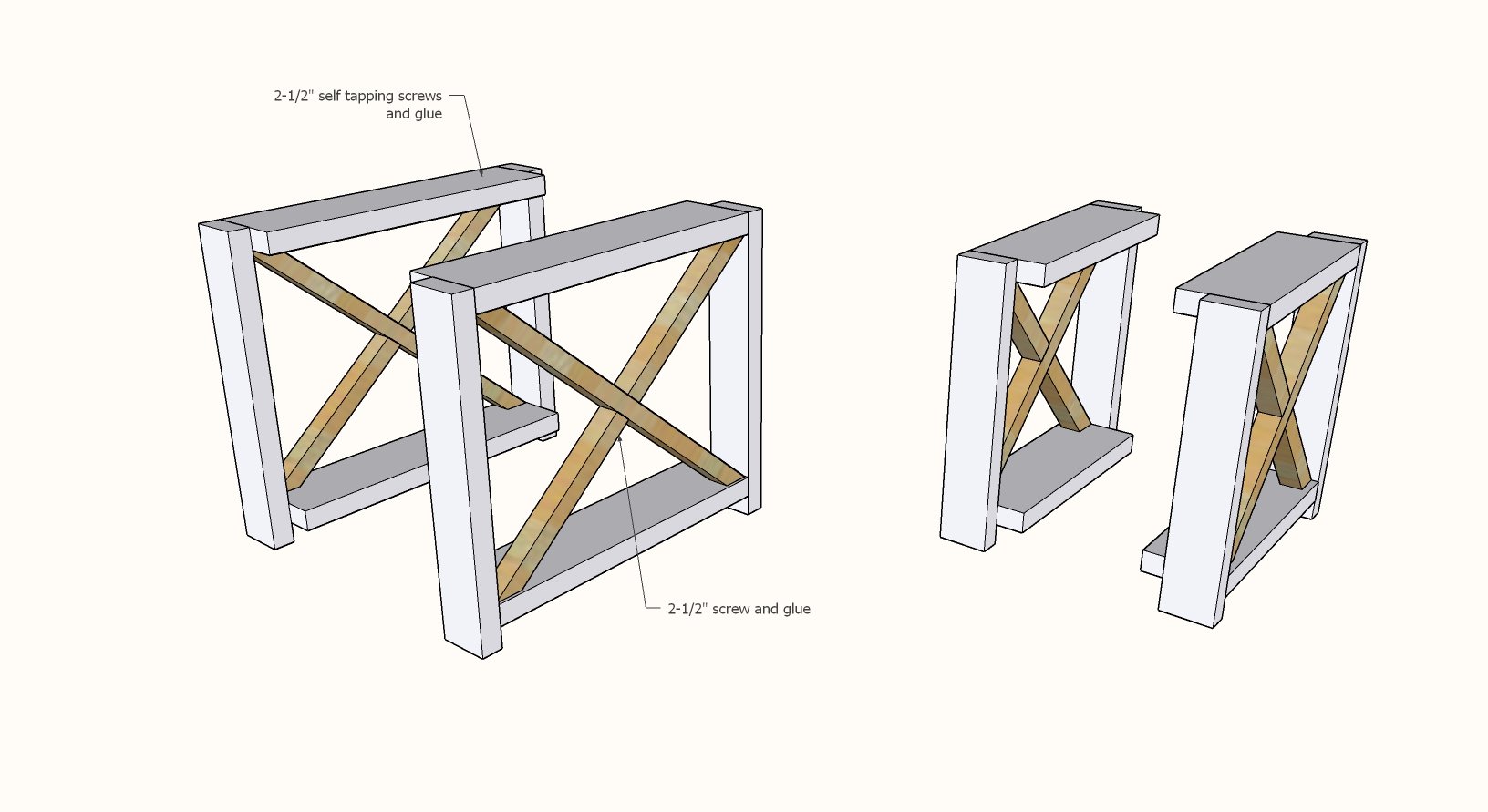
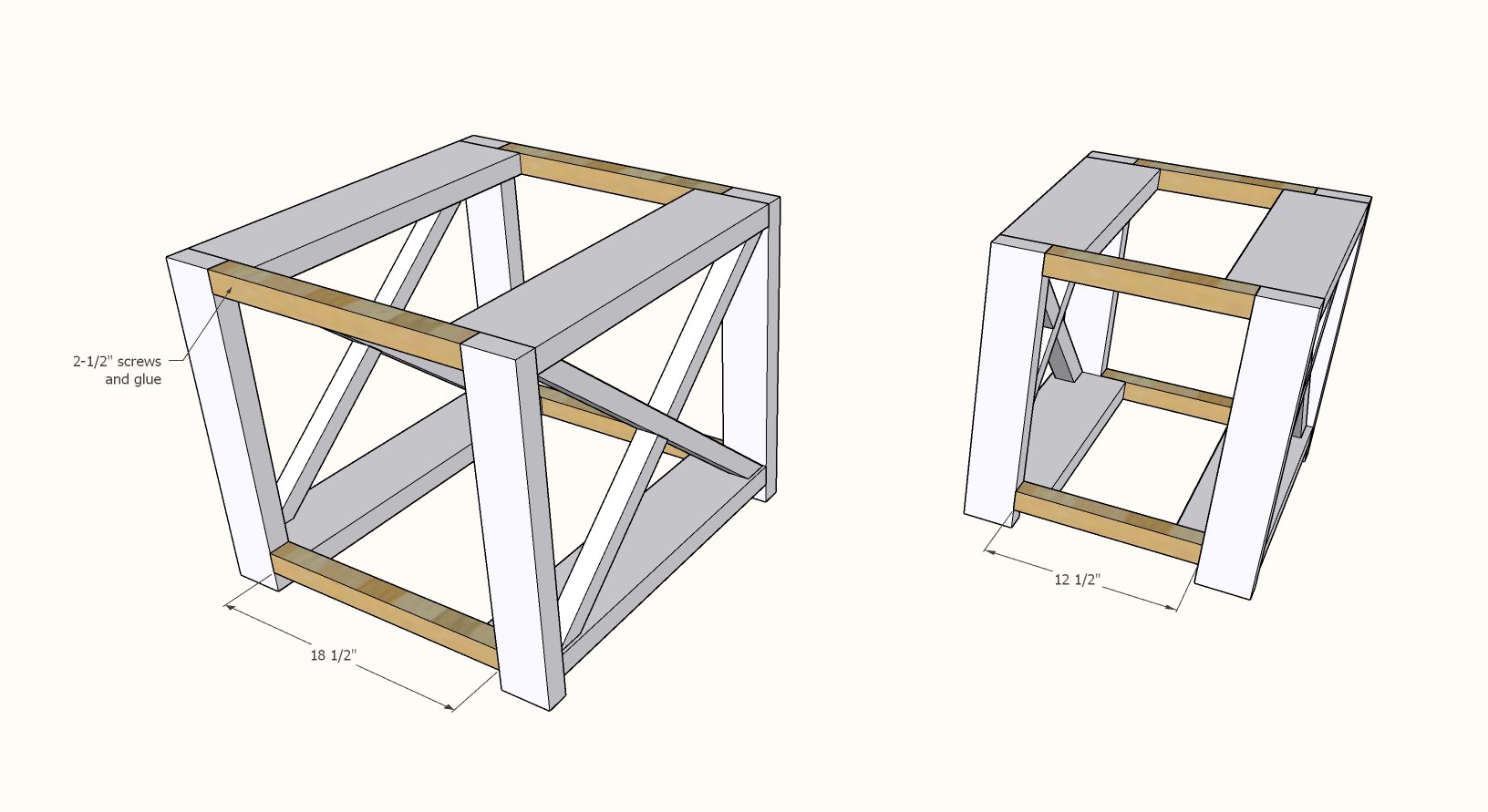
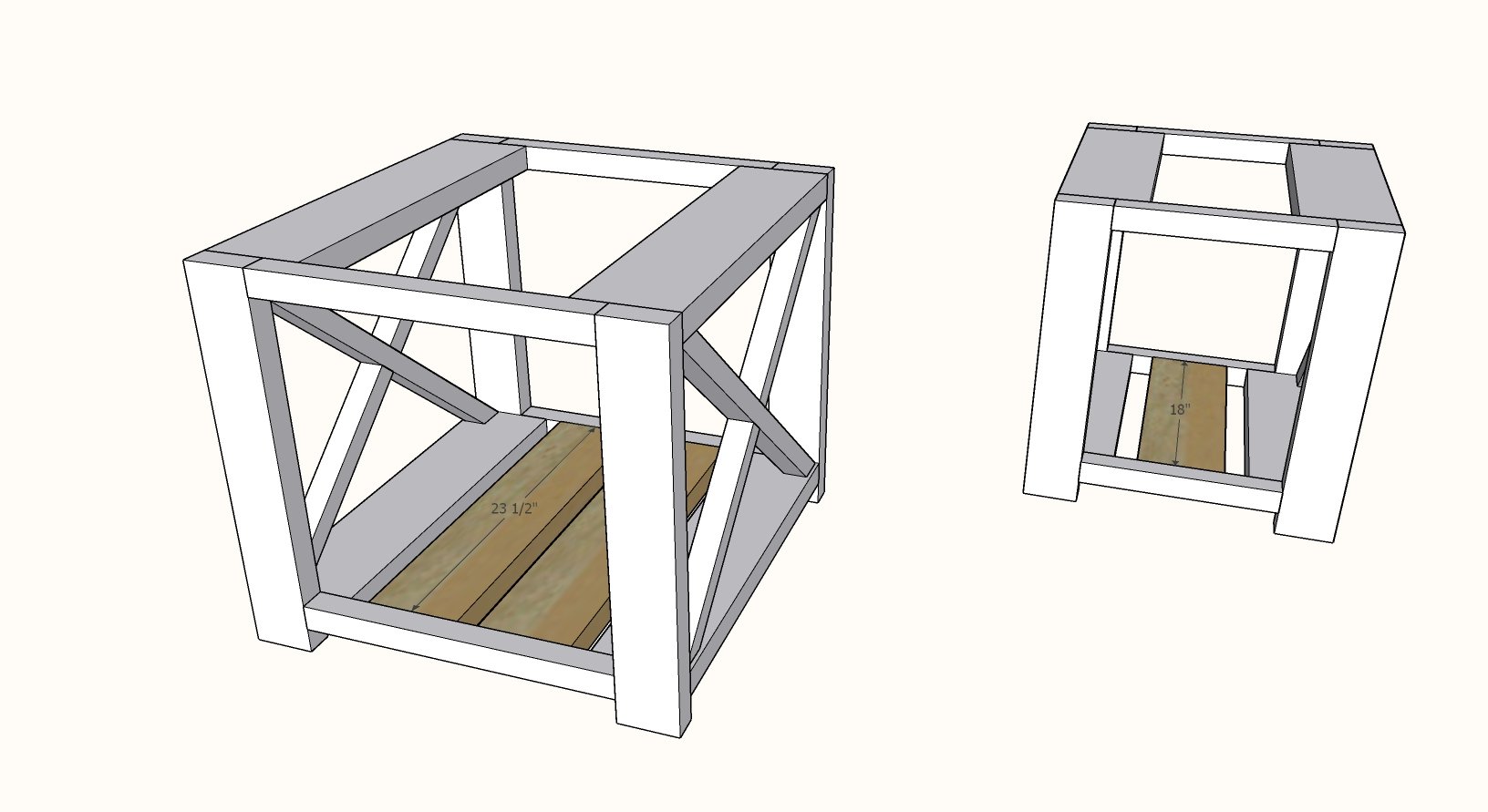
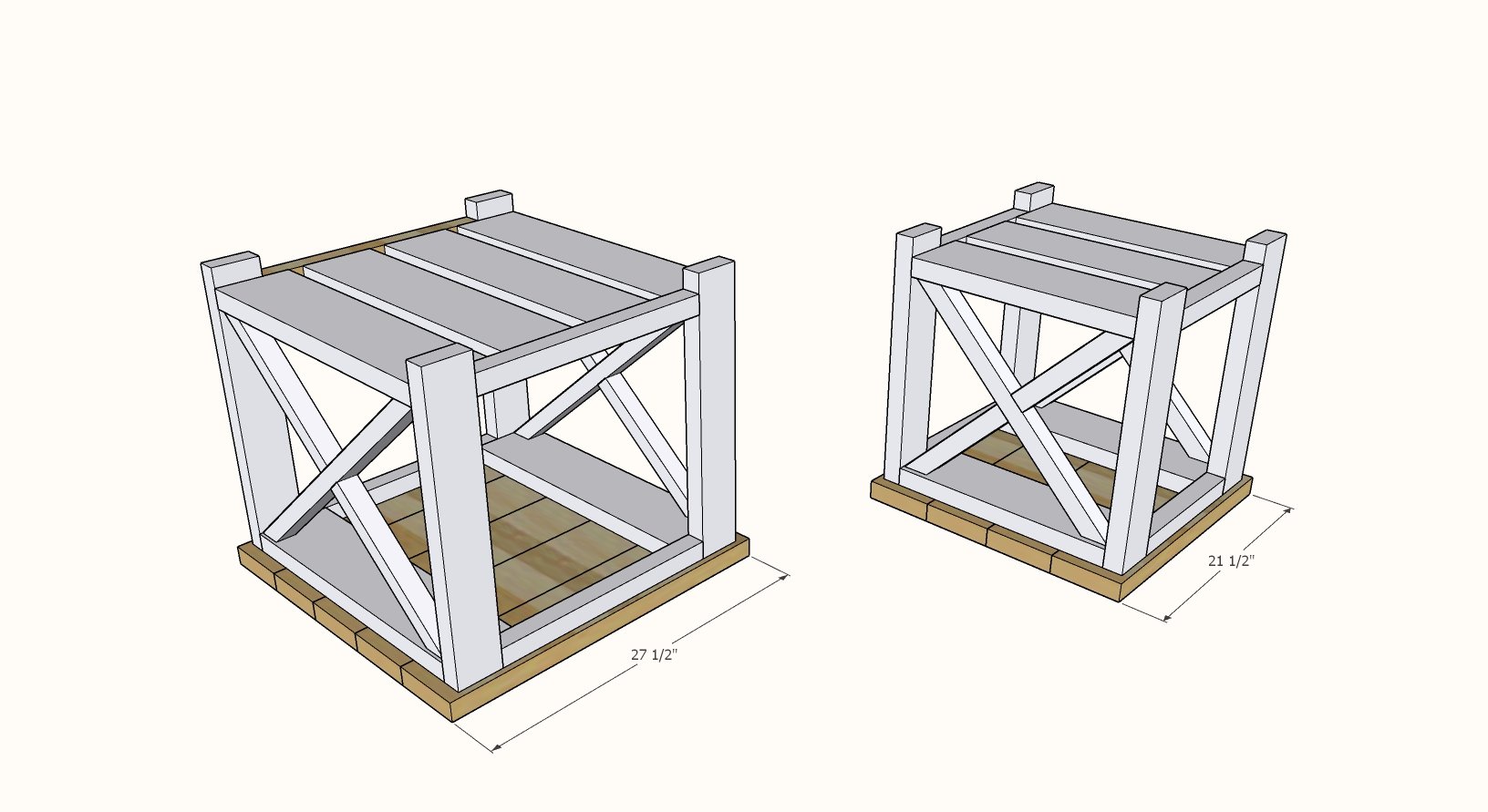
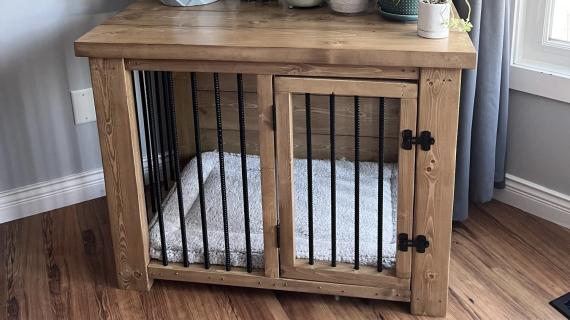
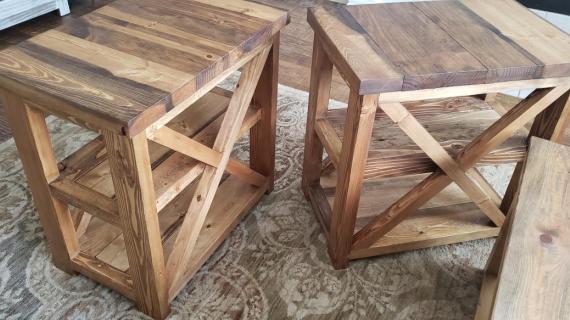
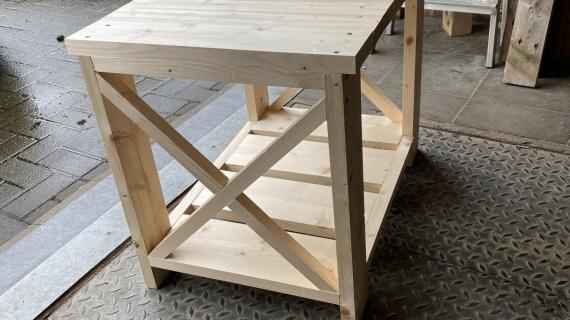
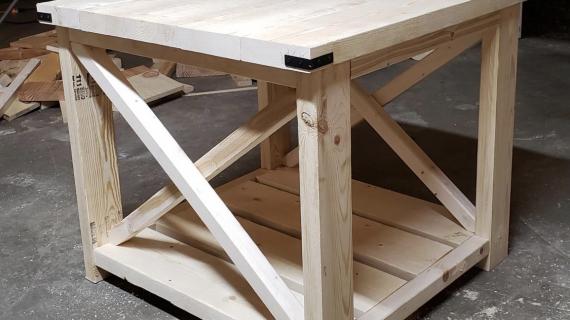
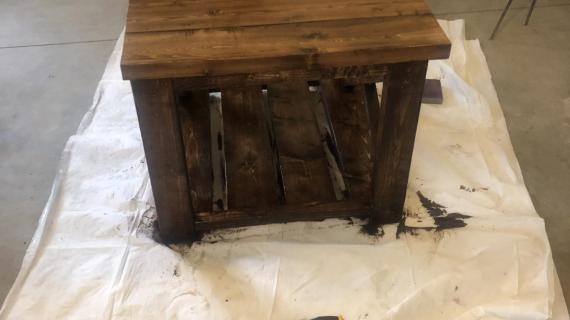
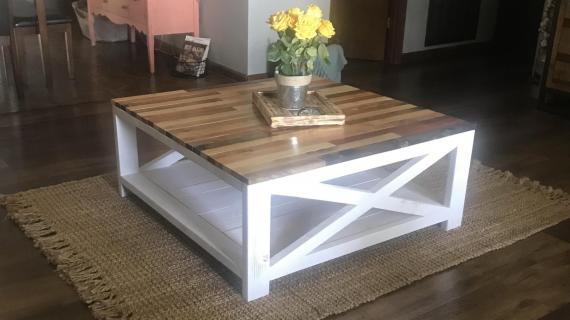
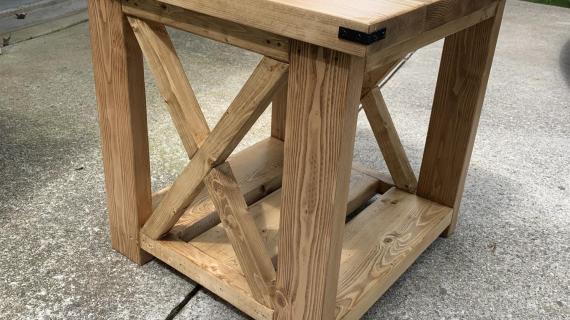
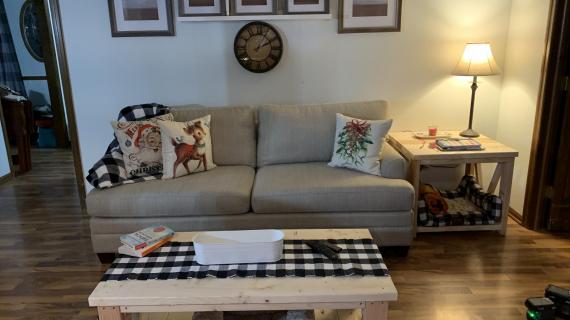
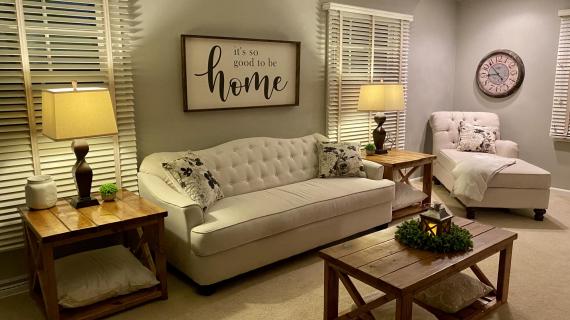
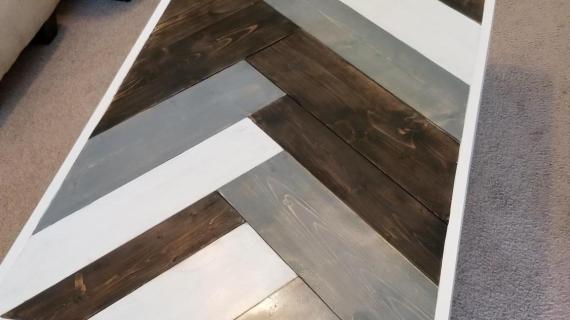
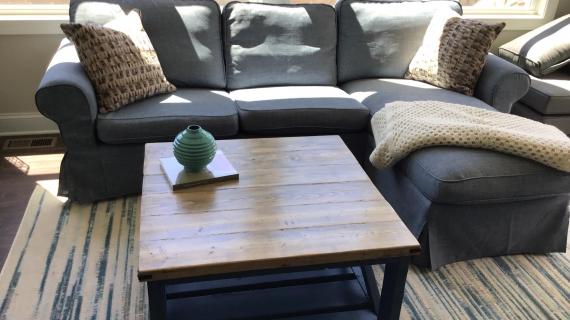
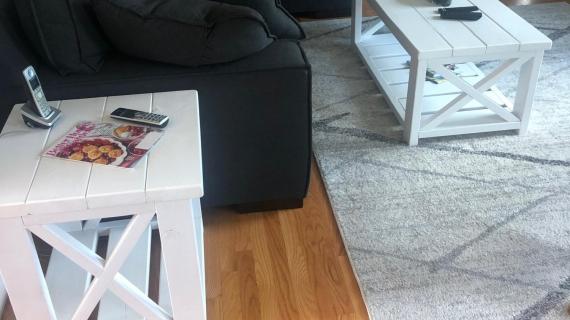

Comments
natmoon
Wed, 03/11/2020 - 14:36
Are the cuts 52 degrees for…
Are the cuts 52 degrees for the large version just like the coffee table? We had trouble with the 52 degrees on the coffee table because our saw only cuts up to 45 degrees
williamp99
Fri, 05/22/2020 - 18:42
Try a hand saw- mark your…
Try a hand saw- mark your angle by holding it up to the piece and then with a hand saw, cut on the mark.
cmurphy5
Mon, 05/11/2020 - 11:23
Hi Ana! What are the angles…
Hi Ana! What are the angles of the X's for the small and large end tables? I completed the farmhouse coffee table project where the angles were 52 degrees in the instructions, but I can't seem to find them for the end tables. Thanks!
mpjacob08
Mon, 05/25/2020 - 09:15
So simple! Love it! I’d like to post my photo but unsure how
My second build ever after making the coffee table! Thanks for teaching me so much Ana!
jessica1
Sat, 07/04/2020 - 15:49
rustic end table
Ana; I made the Farmhouse Rustic table, now making the small end table. For the table, the x's were placed in the ends of the table after it was assembled. For the end table, directions say install the x's first, then put the frame tougher. Why the change? tks dan
ptb9896
Wed, 01/20/2021 - 06:27
Farmhouse coffee table
Great job Ana, def. going to make this.
Where did you get the decorative corner pieces?
Thanks for sharing.
ptb9896
Wed, 01/20/2021 - 06:27
Farmhouse coffee table
Great job Ana, def. going to make this.
Where did you get the decorative corner pieces?
Thanks for sharing.
In reply to Farmhouse coffee table by ptb9896
anemtchick80
Tue, 04/06/2021 - 04:59
I just bought corner…
I just bought corner brackets at Home Depot. They were in the hardware area.